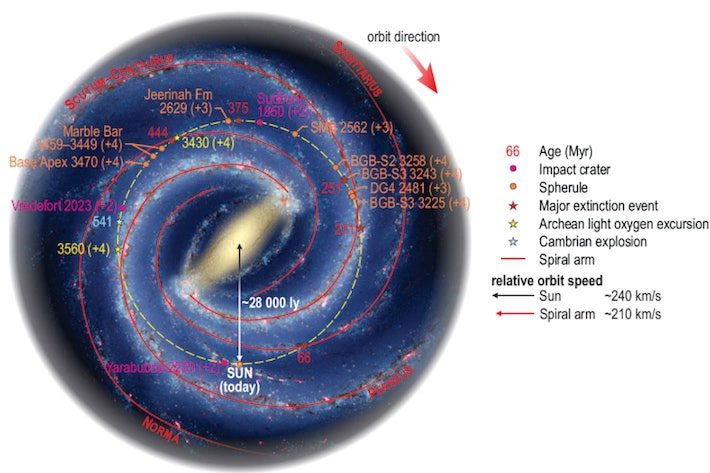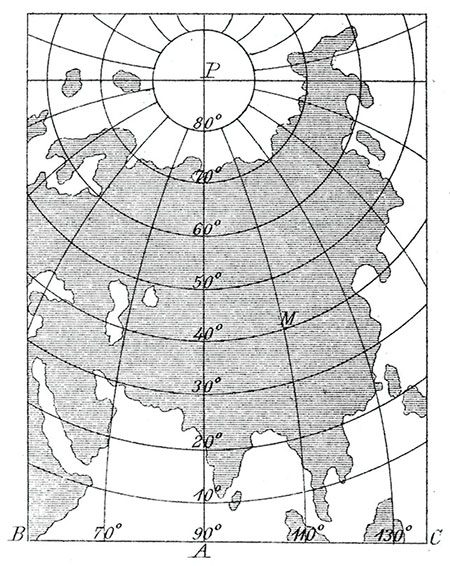The Earth is the only planet known to possess continents.
Unlike any other planet, the surface of the Earth features both continents and oceans. The continental crust is less dense and much thicker than the oceanic crust, causing it to essentially float higher than the oceanic crust.
The presence of continents on Earth has significantly influenced the atmosphere, oceans, climate, and the flourishing of life on the planet. For instance, runoff from the continents is a primary source of several essential nutrients for the oceans, such as phosphorus, which is necessary for the creation of DNA and other biological building blocks.
Previous studies have discovered cycles in the process of generating continental crust. Scientists have often thought that these cycles are related to the regular formation and destruction of supercontinents on the surface of the Earth due to plate tectonics—the drifting, colliding, and subducting of massive rock plates that have shaped the Earth’s surface as we know it today.
However, these cycles are also observed in some of the oldest rocks on Earth, at a time when plate tectonics may not have existed.

In a recent study published in the journal Geology, researchers analyzed data from two locations that hold the earliest history of the continents on Earth—the North American craton in Greenland and the Pilbara craton in Western Australia.
The decay of uranium in zircon crystals has allowed scientists to pinpoint details about the formation of continents at both sites, dating back approximately 2.8 billion to 3.8 billion years ago. Hafnium isotopes within these crystals also help determine when magma flows associated with crust generation occurred.
By examining a vast amount of data from a large collection of rocks, researchers uncovered a pattern in the formation of continental crust that spans about 170 million to 200 million years. The lead author of the study, Chris Kirkland, a geochronologist at Curtin University in Perth, Australia, stated, “This pattern could only be identified through large datasets.”
This morphology corresponds to the time it takes for the Solar System to travel through one of the four main spiral arms of the Milky Way, where the density of stars and interstellar clouds is high, as it completes an orbit around the center of the galaxy.
The gravitational influence from the spiral arms could draw comets from the Oort Cloud in the outer region of the Solar System into the Earth and other planets. Scientists suggest that such comet impacts may have dislodged a significant amount of rock from the Earth’s surface, leading to the compression and melting of the underlying rock, potentially sowing the seeds for the formation of continents.
Kirkland remarked, “These impacts have shaped the evolution of our planet, and it seems that our continents would not have developed in the way they have today without such collisions. This indicates that our planet is connected to the structure of the galaxy.”
The researchers found further evidence for this idea within spherule deposits—rock fragments created by cosmic impacts. These deposits contain small spheres formed from molten rock ejected during a collision or from vaporized rock that condenses and flows after the impact. They noted that the age of the spherule deposits in Australia and South Africa aligns with the Solar System’s movement into the Norma spiral arm approximately 3.25 billion to 3.45 billion years ago. They observed that accurately determining the ages of more spherule deposits could provide additional evidence for this assertion.

Although the Earth experiences more frequent impacts from asteroid belt rocks compared to comets from the Oort Cloud, collisions from the Oort Cloud would generate more energy. This is because near-Earth asteroids “are moving in the same direction as the Earth,” explained Phil Sutton, a planetary scientist at the University of Lincoln, UK, and co-author of the study.
Imagine cars traveling on a multi-lane road in the same direction. If one car collides with another car beside it, “the relative collision speed is quite low,” he explained.
However, if there is an intersection crossing this road and one car collides with another at a 90-degree angle, “the damage would be greater,” Sutton said.
The role of impacts in the formation of continental crust may diminish over time due to the exponential decrease in the average size and number of potential impactors as the Solar System evolves. Scientists note that over time, the emergence of tectonic plates also began to play a more significant role in the production of continents on Earth.


















































